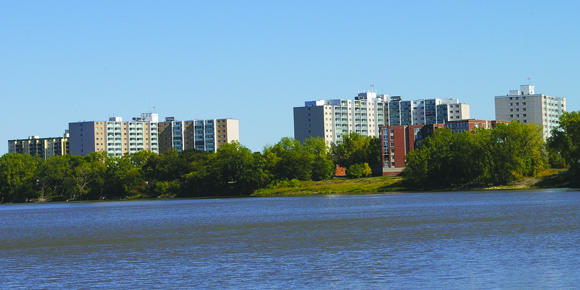In March 2011, WinnipegREALTORS® released, Manitoba’s Rental Housing Shortage: A Discussion Paper Highlighting Challenges and Solutions. At the time, Manitoba and Winnipeg was in the midst of one of the tightest housing markets in the country.
The paper stated Winnipeg currently has the lowest vacancy rate among Canada’s 34 largest cities. Canada Mortgage and Housing Coporation’s (CMHC) 2010 Fall Rental Market Survey indicated that the city’s vacancy rate dropped from one per cent to 0.8 per cent. It was the lowest rate they had recorded since compiling rental statistics in 1990.
One of the key drivers behind what some had identified as a housing crisis was Manitoba’s very successful provincial nominee program, which was attracting record numbers of new immigrants. For example, in 2009, 13,520 new immigrants arrived in Manitoba. At the same time, more people were coming to the province than leaving due to the large influx of immigrants. Resulting in Manitoba’s rental universe — global number of units which are classified as rental — dropping for the 15th time in 18 years.
Thanks to papers, such as the one WinnipegREALTORS® produced to bring attention to this acute rental shortage, a willing provincial government recognized something had to be done to create incentives for new rental construction. The residential construction industry stepped up to build new rental units and condominiums, which in some projects are being rented out, resulting in our vacancy rate now sitting in more balanced territory at three per cent.
Similarly, the MLS® market, which was extremely tight from 2001 to 2010, has loosened up and there is considerably more listing inventory to meet current demand.
However, let’s understand why all markets are local in nature and never remain static. What we are experiencing in 2016 is that Manitoba is not only benefiting from its provincial nominee program, but from less outmigration to Alberta and Saskatchewan, since they are shedding jobs due to an oil sector which reeling from much lower oil prices. Another factor is that some of the Manitobans, who left a few years ago for better job prospects, are coming back.
While it is tragic what happened in Fort McMurray, a number of the trades that find themselves idle will look at places such as Manitoba where construction remains relatively strong and many projects are underway or planned. It has been well documented that Manitoba lacks skilled trades.
It is true that the resale housing market is serving to a much lesser extent as the safety valve for renters unable to find affordable rental accommodations. But we should not be so quick to assume it will stay that way forever. Why? In 2016, WinnipegREALTORS® has already had two record sales months and a near miss in another. June is shaping up to be another very active month for resale transaction activity.
So, as explained above, less outmigration combined with continued intake of new immigrants, including Syrian refugees, means that Manitoba is experiencing a population gain. The increasing numbers of people act as a key driver for real estate market activity — everyone needs a place to live.
It is no surprise that the province’s chief statistician, Wilf Falk, has been the guest speaker at WinnipegREALTORS® forecast breakfast on two occasions. Based on what he had to say this past week, we may need to bring him back again.
Statistics Canada recently showed Manitoba’s population has been growing at a record pace. From April 1, 2015, to April 1, 2016, the province added 19,432 more people, a 1.51 per cent increase.
Falk said it is the best population growth he has seen since 1971. He is also seeing modern day records on a number of fronts. There were 16,135 new immigrants, 5,158 new non-permanent residents, for example, international students, and, in light of what is happening west of us, 13,596 more people coming from other provinces or countries than leaving them.
Falk remains positive into the foreseeable future. He is also very pleased to see that the federal government has reinstated the long form census, which will provide Manitobans and all Canadians with far richer information to plan and anticipate impacts of, not only an increasing population, but the demographic make-up and other important socio-economic information.
So, stay tuned. Winnipeg’s real estate market may well end up performing better than expected based on what Wilf Falk is seeing happen this year in our population make-up. The changing face or faces of Winnipeg and Manitoba cannot help but exert an influence on the real estate market.



